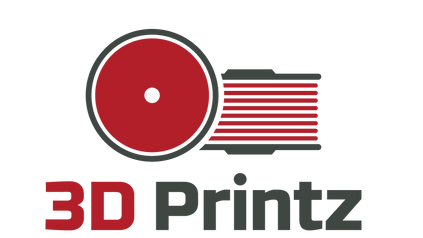
The History and Evolution of 3D Printing Technology
3D printing technology has come a long way since its inception in the 1980s. What was once a niche technology used primarily for rapid prototyping is now widely used across a variety of industries, from manufacturing to healthcare to fashion. In this blog post, we'll take a look at the history and evolution of 3D printing technology and how it has developed into the powerful tool it is today.
1980s: The Beginnings of 3D Printing
The first patents for 3D printing technology were filed in the 1980s, and the first prototypes of the technology were developed in the following decade. Early 3D printers used a process known as stereo-lithography, which involved using a laser to harden a photosensitive resin layer by layer to build up a three-dimensional object. These early printers were slow and expensive, and the technology was primarily used for rapid prototyping by industrial designers and engineers.
1990s-2000s: The Emergence of Fused Deposition Modelling
In the 1990s and early 2000s, a new type of 3D printing technology known as fused deposition modelling (FDM) emerged. FDM involved extruding melted plastic filament layer by layer to build up a three-dimensional object. This process was much faster and more affordable than stereo-lithography, and it quickly became popular for use in product development and prototyping.
2010s: The Rise of Consumer 3D Printing
In the 2010s, 3D printing technology started to become more accessible to consumers. The introduction of low-cost desktop 3D printers made it possible for individuals and small businesses to start using the technology for a variety of applications, from creating custom jewellery to prototyping new products. This was also the decade when the first 3D-printed organ was successfully transplanted, demonstrating the potential of the technology in the field of medicine.
Today: The Future of 3D Printing
Today, 3D printing technology continues to evolve and improve, with faster, more precise, and more versatile printers being developed all the time. The use of 3D printing has expanded beyond prototyping and product development to include manufacturing, where it is being used to produce finished products in a range of industries. There are also ongoing efforts to develop new materials and techniques that will make it possible to print a wider range of objects, including complex structures and functional materials like electronics.
In conclusion, the history and evolution of 3D printing technology is a story of rapid development and increasing accessibility. From its humble beginnings as a niche technology used for rapid prototyping, 3D printing has become a powerful tool with a wide range of applications, and its future looks bright as new advancements continue to be made.
1980s: The Beginnings of 3D Printing
The first patents for 3D printing technology were filed in the 1980s, and the first prototypes of the technology were developed in the following decade. Early 3D printers used a process known as stereo-lithography, which involved using a laser to harden a photosensitive resin layer by layer to build up a three-dimensional object. These early printers were slow and expensive, and the technology was primarily used for rapid prototyping by industrial designers and engineers.
1990s-2000s: The Emergence of Fused Deposition Modelling
In the 1990s and early 2000s, a new type of 3D printing technology known as fused deposition modelling (FDM) emerged. FDM involved extruding melted plastic filament layer by layer to build up a three-dimensional object. This process was much faster and more affordable than stereo-lithography, and it quickly became popular for use in product development and prototyping.
2010s: The Rise of Consumer 3D Printing
In the 2010s, 3D printing technology started to become more accessible to consumers. The introduction of low-cost desktop 3D printers made it possible for individuals and small businesses to start using the technology for a variety of applications, from creating custom jewellery to prototyping new products. This was also the decade when the first 3D-printed organ was successfully transplanted, demonstrating the potential of the technology in the field of medicine.
Today: The Future of 3D Printing
Today, 3D printing technology continues to evolve and improve, with faster, more precise, and more versatile printers being developed all the time. The use of 3D printing has expanded beyond prototyping and product development to include manufacturing, where it is being used to produce finished products in a range of industries. There are also ongoing efforts to develop new materials and techniques that will make it possible to print a wider range of objects, including complex structures and functional materials like electronics.
In conclusion, the history and evolution of 3D printing technology is a story of rapid development and increasing accessibility. From its humble beginnings as a niche technology used for rapid prototyping, 3D printing has become a powerful tool with a wide range of applications, and its future looks bright as new advancements continue to be made.

Leave a comment